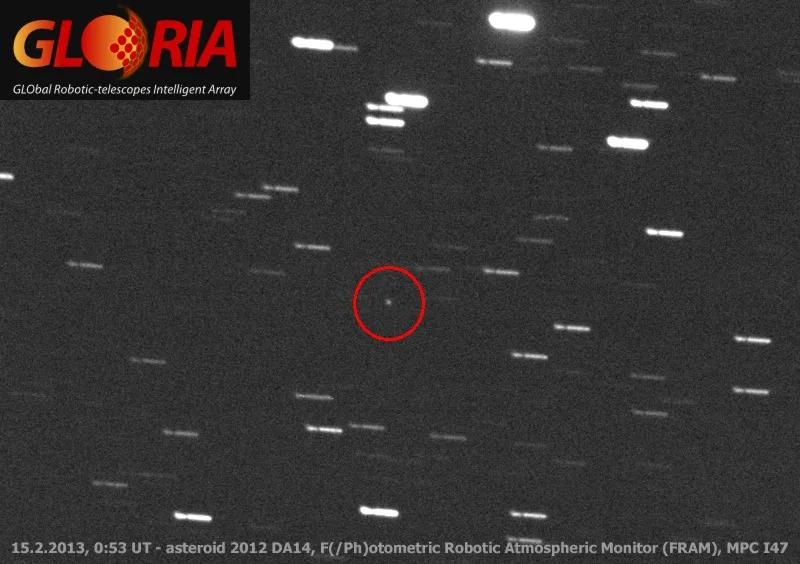The telescope FRAM (F/Photometric Robotic Atmospheric Monitor), which is operated by the Institute of Physics of the ASCR at the Pierre Auger Observatory close to the town Malargüe in western Argentina, has successfully observed the asteroid 2012 DA14. The asteroid flew very close to the Earth surface during the evening hours of February 15th, 2013, more specifically at 20:26 CET it flew less than 28,000 kilometres above the surface of the Earth, what is the record for the celestial body of this size.
Because of its location at the southern hemisphere, the telescope FRAM observed the minor planet before its closest approach to the Earth, i.e. the observations were made during the night from Feb 14 to Feb 15. The first photograph was taken before 1h CET, February 15th, when the asteroid still was about 450,000 km far from the Earth and had the brightness about magnitude 16 (10,000times less then is the brightness of the faintest stars observable by the naked eye).
The telescope operator Martin Mašek put together 20 ten-second exposures into one image, where a minor planet is visible as the circular dot in the centre of the image. This image was first of the asteroid photographs made within the European project GLORIA. GLORIA is the global network of robotic telescopes with the participation of the FRAM telescope. The image has thus achieved wide publicity, it was shown e.g. at the web pages of NASA, published in the newspaper Guardian, and by the internet media literally around the world – e.g. in the U.S.A., in Australia, in Japan, or in Indonesia.
Martin Mašek has subsequently derived also the precise position of the asteroid in the images, which he has provided to the Minor Planet Center (MPC) in United States. These values from the FRAM telescope were then used for refined trajectory of the satellite published in electronic circular of the MPC (MPEC No. 2013-C72).
The team of the FRAM telescope has later made also an animation using the gathered images of the asteroid 2012 DA14. The minor planet is visible now as a moving dot in the center of the image. Each frame of the animation is combined from the five ten-second exposures, together 50 images were used for the animation.
During the first hours (CET) of February 15th was the minor planet 2012 DA14 moving between stars with the apparent velocity of only several arcseconds per minute. However, during the time of its closest approach (which was located even below the trajectories of geostationary satellites) the asteroid has literally sprinted through the field of stars with the apparent velocity of almost one degree per minute. This speed is very nicely visible in the animation made using the images of the partner telescope BOOTES-1B that also works within the GLORIA network and it is located close to the town Malaga in southern Spain.
Further information about the FRAM telescope is possible to be found at the project webpage gloria.fzu.cz and further information about the EU project GLORIA and more details about the fly-by of the asteroid 2012 DA14 on the webpage gloria-project.eu.
